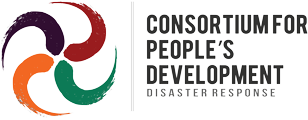In recent years, the Philippines has experienced some of the strongest and most destructive typhoons in its history – Typhoon Ondoy (Ketsana) and Pepeng (Parma) in 2009, Typhoon Sendong (Washi) in 2011, Typhoon Pablo (Bopha) in 2012, Typhoon Yolanda (Haiyan) in 2013, and Typhoon Ruby (Hagupit) in 2014.
The immense devastation brought by Typhoon Yolanda to the central Philippines in November 2013 drew in overwhelming sympathy and support from the international community of donor governments, development agencies, and other humanitarian organizations. Typhoon Yolanda was unprecedented in Philippine history. It was the deadliest typhoon on record with more than 6,000 people killed, and the strongest storm recorded at landfall in terms of wind speed. Typhoon Yolanda caused catastrophic destruction, especially in Samar and Leyte, with about 11 million people affected and many left homeless.
The Philippines was also not spared from other forms of disasters (both natural and human-induced). Quite recently, it was struck by the Bohol Earthquake in October 2013, the Zamboanga Conflict in September 2013, and the numerous fires and demolitions in urban poor communities. Metro Manila is also bracing itself for the Big One, or the much-feared West Valley Fault earthquake, which scientists say is due anytime soon.
Disasters have continued to escalate unabated, posing a greater challenge for both government and non-government organizations alike. In 2014, the World Risk Index ranked the Philippines as the second country most at risk for its exposure to natural disasters. What contributed heavily to the Philippines’ overall ranking is its high vulnerability and lack of coping capacity.
With such a huge task ahead, different stakeholders deemed it necessary to work hand-in-hand in order to make significant and relevant change. NGOs like Citizens’ Disaster Response Center (CDRC) can no longer work on its own, or independently from other organizations. The situation clearly calls for a unified approach.
In 2014, right after Typhoon Yolanda devastated the Visayas region, the CDRC, together with three other organizations, namely, IBON International, Working for Empowerment and Good Governance Institute, Inc. (WeGovern Institute), and Management Advancement Systems Association, Inc. (MASAI), formed a consortium that would help address the growing clamor for assistance. The combined expertise and network of these four organizations helped raise funds for Yolanda early recovery and rehabilitation projects in least-served, most vulnerable, and hard-to-reach disaster-stricken communities.
But because disasters continued to strike, and many other needs came up, the consortium did not only support Yolanda activities, but other projects as well. For instance, the consortium also raised funds for Typhoons Ruby and Seniang, for Typhoon Pablo-affected areas in Mindanao, and for climate change adaptation projects, among others.
Now, almost one year after coming together, the need for a concerted effort in disaster response remains relevant. The four organizations saw the need to continue what they have started, and to formally set up the network for continued cooperation. And so the Consortium for People’s Development – Disaster Response (CPD-DR) was born.
From a loose network of organizations who came together for Typhoon Yolanda, CPD-DR has already made significant contributions to disaster response in a span of just one year of existence. It has already initiated and implemented 10 emergency response projects, and early recovery and rehabilitation projects with different local and regional partners.
To date, the Consortium has already served approximately 7522 families in hard-to-reach and least-served disaster-stricken communities in the Philippines; it continues to operate and implement projects through the support of its three main donors – National Alliance for Filipino Concerns (NAFCON), Climate Relief Fund, and Unitarian Universalist Service Committee (UUSC). Through these funds, the Consortium was able to provide relief goods, seed, animal and farm tools dispersal, repair of fishing boats, shelter assistance, health and psycho-social services, and related capacity development activities.
The Consortium’s steering committee completed a strategic planning workshop in December 2014, where the participating NGOs forged the CPD-DR vision, mission, goals and strategies. CPD-DR aims to develop people-oriented disaster risk reduction initiatives that build on people’s capabilities, potentials and strengths. On that basis, it intends to provide support for strategic, long-term rehabilitation efforts for rebuilding better, stronger communities devastated by natural and manmade disasters.
Along these lines, longer-term partnerships are being explored with some donor agencies that have recognized the efforts of the CPD-DR and its convenors. This year, and in the many years to come, CPD-DR looks forward to more collaborations and projects with more partners in the areas of disaster risk reduction and climate change adaptation.
